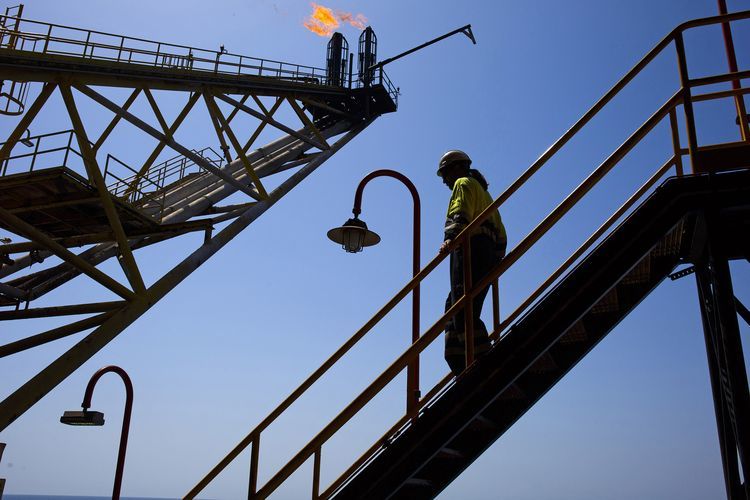
Oil is set for its longest run of gains in four years after entering a bull market amid speculation that major producers may act to freeze output and as U.S. crude and fuel stockpiles decline.
Futures climbed as much as 0.9 percent in New York, rising a seventh session for the longest run since July 2012. OPEC is on course to agree to a production-freeze because its biggest members are pumping flat-out, according to Chakib Khelil, the group’s former president. U.S. crude inventories dropped the most in five weeks through Aug. 12, while fuel stockpiles slid a third week, Energy Information Administration data showed Wednesday.
Oil has climbed more than 20 percent to enter a bull market, less than three weeks after it tumbled into a bear market. Russian Energy Minister Alexander Novak said that the nation was open to discussing a freeze after Saudi Arabian Energy Minister Khalid Al-Falih said that informal talks in September may lead to action to stabilize the market. A deal to cap production was proposed in February but a meeting in April ended with no accord.
“The catalyst for this run was the Saudi statement on its preparedness to discuss initiatives to stabilize the price,” said Ric Spooner, chief analyst at CMC Markets in Sydney. “Oil is now getting to an interesting level, approaching the high end of the range. If WTI gets into the low $50s, we may see the current momentum start to sag a bit.”
West Texas Intermediate for September delivery added as much as 43 cents to $48.65 a barrel on the New York Mercantile Exchange and was at $48.56 at 1:27 p.m. in Hong Kong. The contract rose 3.1 percent to close at $48.22 on Thursday, capping an almost 16 percent advance over the previous six sessions. Total volume traded was about 12 percent above the 100-day average. Prices are up 9.1 percent this week.
Output Freeze
Brent for October settlement was 12 cents higher at $51.01 a barrel on the London-based ICE Futures Europe exchange. The contract advanced 2.1 percent to close at $50.89 on Thursday, also entering a bull market after climbing more than 20 percent from its early-August low. Prices are up 8.6 percent this week. The global benchmark crude traded at a $1.88 premium to WTI for October.
For a story on how effective an output freeze would be, click here.
An agreement to freeze output is within reach as Saudi Arabia, Iran and non-OPEC member Russia are producing at, or close to, maximum capacity, Khelil said in a Bloomberg Television interview on Aug. 17. Iranian Oil Minister Bijan Namdar Zanganeh hasn’t decided yet whether to participate in the talks in Algiers next month, a spokesman said on Aug. 16.
Oil-market news:
Saudi Arabia raised its combined crude oil and refined-product exports to 8.83 million barrels a day in June, the highest on record for that month, according to data from the Joint Organisations Data Initiative. Exxon Mobil Corp., Chevron Corp. and Hess Corp. have agreed to bid together for rights to drill for crude in Mexico’s deepwater oil areas, according to a person with direct knowledge of the plans. U.S. crude stockpiles dropped by 2.5 million barrels last week to 521.1 million, according to data from the EIA.
Recommended for you
